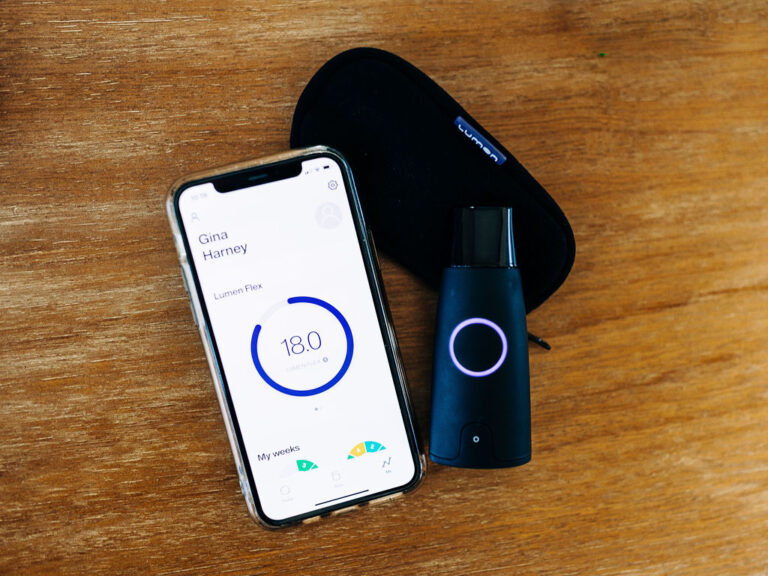If your brain feels like it’s running on 47 open tabs while your body is stuck in permanent fight-or-flight mode, this one’s for you. I spent months wondering why I could drink all the adaptogens and do all the yoga but still felt like I was vibrating at a frequency that could power a small city. Turns out, I was treating symptoms instead of addressing the root: my nervous system was basically running a marathon 24/7.
Here’s what I wish someone had told me earlier: your nervous system is like your body’s Wi-Fi router—when it’s glitchy, everything else goes haywire. Sleep becomes impossible, focus disappears, and even the smallest stressors feel like actual emergencies. But here’s the good news I’ve discovered through way too much research and trial-and-error: nervous system regulation isn’t complicated, and it doesn’t require fancy equipment or hours of meditation.
I’m about to share seven evidence-based practices that actually work—not just “take a deep breath” advice, but real techniques that help your body remember what calm feels like.
Your Nervous System 101: The Control Center You Never Knew You Had
Let’s start with a quick science lesson that won’t put you to sleep. Your nervous system has two main modes: sympathetic (your internal fire alarm) and parasympathetic (your chill-out mode). The sympathetic system is what kicks in during stress—it’s designed to keep you alive when you’re being chased by a tiger. The problem? Modern life makes your nervous system think you’re being chased by tigers all day long.
Your emails, deadlines, that passive-aggressive text from your friend, traffic—your body processes all of it as potential threats. This keeps you stuck in fight-or-flight mode, where your heart races, your muscles stay tense, and your brain stays hypervigilant even when you’re trying to relax.
Sound familiar? Here are the signs your nervous system is crying out for help: racing thoughts even when you’re exhausted, feeling “tired but wired” at bedtime, overreacting to small annoyances, trouble falling asleep despite being drained, unexplained digestive issues, or that constant feeling of being slightly on edge.
The solution isn’t to eliminate stress completely (impossible) but to give your nervous system daily opportunities to reset and remember that you’re actually safe.
Your Nervous System Reset Toolkit: 7 Practices That Take 5 Minutes or Less
Practice 1: The 4-7-8 Morning Reset
This breathwork technique is like hitting the reset button on your entire day. The science is simple: when you extend your exhale longer than your inhale, you activate your parasympathetic nervous system almost immediately.
Here’s how: Inhale through your nose for 4 counts, hold for 7, then exhale through your mouth for 8 counts. Repeat this three times. That’s it. The magic happens in that long exhale—it literally signals to your brain that you’re safe.
Do this before you check your phone in the morning, and watch how differently you respond to whatever chaos awaits in your inbox. Your future self will thank you for this 90-second investment.
Practice 2: Somatic Shaking (5-Minute Body Reset)
Animals in the wild naturally shake off trauma and stress—it’s how they discharge excess energy after escaping predators. Humans? We’ve somehow convinced ourselves that shaking means weakness. Plot twist: intentional shaking is one of the most effective somatic practices for nervous system regulation.
Start by gently shaking your hands, then let it travel up your arms, through your shoulders, and eventually through your whole body. There’s no “right” way to do this—just follow what feels good. Do this after particularly stressful moments or before bed to help your body release the day’s accumulated tension.
The key is making it intentional, not just random movement. You’re literally helping your nervous system complete its stress cycle.
Practice 3: The “Gentle No” Boundary Practice
Here’s something that blew my mind: every boundary you set teaches your nervous system that it’s safe. When you consistently honor your own needs and limits, you’re essentially telling your body, “I’ve got this. You don’t need to stay on high alert.”
Start with one small “no” per day. Decline that extra project when your plate is already full. Say no to plans when you’re genuinely tired. Skip that event that drains your energy just because you think you “should” go.
This isn’t about being selfish—it’s about nervous system maintenance. When your body trusts that you’ll protect your energy, it can finally relax.
Practice 4: Vagus Nerve Humming (2-Minute Reset)
The vagus nerve is like the main highway between your brain and body, and when it’s functioning well, it promotes calm and connection. One of the easiest ways to stimulate it? Humming.
Seriously. Hum your favorite song while you’re making coffee, getting dressed, or doing dishes. The vibrations literally massage your vagus nerve and signal safety to your nervous system. Bonus points if you splash cold water on your wrists or face afterward—cold exposure also stimulates the vagus nerve.
It sounds almost too simple to work, but the research backs it up. Plus, it’s free therapy that you can do anywhere.
Practice 5: Grounding Through Your Senses (The 5-4-3-2-1 Technique)
When your mind is spiraling and your body feels disconnected, this technique brings you back to the present moment faster than anything I’ve tried. It’s especially helpful when you’re feeling overwhelmed or like you’re floating outside your body.
Notice 5 things you can see, 4 things you can touch, 3 things you can hear, 2 things you can smell, and 1 thing you can taste. This isn’t just a distraction technique—it’s actively engaging your nervous system through sensory input, which calms racing thoughts and grounds you in your body.
I use this one when I’m in line at the grocery store feeling anxious, during overwhelming work meetings, or anytime I notice my thoughts getting chaotic.
Practice 6: Progressive Muscle Release (Before Sleep)
This one’s a game-changer for anyone whose body holds onto the day’s stress. Starting with your toes, systematically tense each muscle group for 5 seconds, then release. Work your way up through your legs, core, arms, shoulders, and face.
The magic isn’t in the tensing—it’s in the release. That contrast teaches your body the difference between tension and relaxation, which many of us have honestly forgotten how to feel. It’s like giving your nervous system permission to finally let go.
Do this in bed before sleep, and prepare to actually feel your body melting into the mattress instead of lying there reviewing every conversation from the day.
Practice 7: Morning Light + Movement Combo
Your circadian rhythm and nervous system are best friends, and when one is regulated, it helps the other. Getting natural light in your eyes within the first hour of waking while doing gentle movement is like a double shot of nervous system regulation.
This doesn’t mean you need to become a sunrise yoga person (unless that’s your thing). Even 5 minutes outside doing gentle stretching or walking around your yard works. The combination of light exposure and movement signals to your body that it’s time to be alert and energized, which paradoxically helps you feel calmer throughout the day.
If you live somewhere with limited sunlight, a light therapy lamp can work similarly—just pair it with some gentle stretching or dancing in your living room.
From Chaos to Calm: How to Actually Maintain These Habits
I know what you’re thinking: “This all sounds great, but how do I actually stick with it?” The secret sauce is what I call the “stack and stack” method—attach these new practices to habits you already do automatically.
Breathwork gets stacked with your morning coffee. Humming gets stacked with brushing your teeth. Progressive muscle release gets stacked with getting into bed. When you piggyback new habits onto existing ones, your brain doesn’t have to create entirely new neural pathways.
Start stupidly small. Week one, pick just two practices that feel most doable. Week two, add one more. Don’t go full perfectionist and try to implement all seven at once—that’s just another way to stress out your nervous system.
Track your progress, but keep it simple. Rate your overall stress and calm levels on a scale of 1-10 each day. After a few weeks, you’ll start to notice patterns and see which practices have the biggest impact on your particular nervous system.
Red flag alert: if you find yourself turning these practices into another source of stress or getting caught in all-or-nothing thinking about “perfect” practice, take a step back. The goal is regulation, not perfection.
Your Nervous System Deserves This Reset
Your nervous system has been working overtime to keep you safe in a world that constantly triggers your stress response. It’s time to give it the daily reset it deserves—not because you’re broken or need fixing, but because you deserve to feel calm, focused, and present in your own life.
These aren’t just wellness trends or “woo-woo” practices—they’re science-backed techniques that acknowledge the very real connection between your body and mind. When you regulate your nervous system, everything else starts to fall into place. Sleep improves, focus sharpens, relationships feel easier, and you stop feeling like you’re constantly bracing for the next crisis.
Which practice are you starting with today? I’m genuinely curious about everyone’s nervous system experiments, so drop a comment and let me know how it goes. We’re all figuring out this stress reduction habits thing together, and honestly, that’s the best part.
DISCLAIMER: Some links on this site are affiliate links, which means we might earn a small commission if you shop through them (no extra cost to you—think of it as buying us a matcha 🍵 for the research).
While some of us are doctors, we’re not your doctors. The info on this site is meant to educate and empower, not diagnose or treat. Always chat with your own healthcare provider before starting new meds, peptides, supplements, or that intense cold plunge-fasting-stack we’re raving about. You do you—but do it safely. 💪







